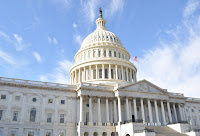
In addition, borrowers whose incomes are below 400% of the federal poverty level will have their loan repayments subsidized (reduced) by advanced loan payment tax credits granted by the federal government. These tax credits will be paid directly by the federal government to the lenders and the borrowers will simply be responsible for paying the difference between their actual loan payment amount and the amount paid by the federal government.
Also, those borrowers whose income is below 250% of the federal poverty level will receive reduced lending fees and interest rates on all loans that fall into the “Silver” category, one of four categories of loans defined by the government, each of which is designated by a different metal name (bronze, silver, gold, and platinum). Silver level loans are those loans whose payments are approximately 30% of the borrower’s monthly take-home pay.
The new law requires that loans may be taken in any amount that the borrower chooses, without limit. A new government website for the loans has been created. The website address is www.guaranteedloan.gov. Borrowers may complete their loan applications online or by telephone, 24 hours a day, by calling 1-(800)-446-8968 or 1-800-IGO-TYOU. Once the application has been completed the borrower will be provided with a list of local banks from which to select their loan. Funds will be released by the bank to the borrower approximately one week after the loan has been approved.
A government official who requested anonymity was quoted as saying, “Yes, it’s possible that interest rates for these loans may be a bit higher than today’s prevailing rates. It is possible that we could see rates of 15% - 25% due to the fact that the most credit-worthy borrowers will be subsidizing those borrowers with a history of bankruptcy, foreclosure, repossession, slow payments, and default. However, in the long run this act will assure that all borrowers receive the funds that they need in order to get new homes, pay off student loans and other forms of debt, get new cars and trucks, , or start a new business.” A banking industry official who also requested anonymity stated, “We are fairly confident that the higher interest rates that we may now charge to all borrowers will offset the losses that we will probably experience from loan defaults. If that does not occur we will simply request higher interest rates and/or more government intervention.”
SOUND TOO GOOD TO BE TRUE? ACTUALLY, IT IS.
THIS NEVER REALLY HAPPENED…AT LEAST NOT IN BANKING…
It did happen in health care. It’s called the Patient Protection and Affordable Care Act or the ACA or Obamacare. We are just approaching the conclusion of three years into the implementation of mandatory insurance, guaranteed acceptance, and insurance premiums that, for many, are subsidized by the federal government.
When put into banking terms it sounds pretty ridiculous, doesn’t it? Loans for everyone regardless of, well, anything. Everyone pays the same interest rates, except those who earn less money, and they pay lower interest rates. Unlimited loans that are not tied to anything resembling the borrower’s ability to re-pay. Hey, we had something almost like this and it was called the “Housing Bubble”. When it burst it almost brought down the whole world’s economy. But that’s another story.
It was pretty clear to anyone in the health insurance industry that the ACA was doomed from the very start. By its very nature it can’t really even be called insurance. That’s because insurance allows insurance companies to evaluate risk, price accordingly, and even reject some applicants so that the other policy owners do not wind up with sky high rates. Think about that in terms of your car insurance. Would you want to pay the same rates as the driver who has five DUI’s? There is no such thing as risk evaluation when it comes to the ACA. Everybody’s covered and everybody of the same age pays the same rates (except those who pay less because they earn less). One thing that the regulators and the insurance companies didn’t anticipate was the high number of previously uninsured people who came into the system, qualified for reduced rates, got medical treatment, and then dropped their insurance. For them this was never insurance, just a free, or cheap visit to the hospital and then back to business as usual.
Now, I’m the first one to admit that the old system needed fixing but this law went way too far in all the wrong ways. That’s why the insurance companies are dropping out of the market left and right. And yes, for you skeptics out there, the insurance companies and the insurance co-ops that were created by the ACA are losing hundreds of millions in their on-exchange businesses and many are going, or already did, go out of business.
We are about to begin the fourth annual Open Enrollment for the ACA and many areas of the country will have only one or two insurance companies available to them. One county in Arizona may have none. That’s not all. Rates will be much higher in 2017, networks will be smaller, out-of-pocket costs will be higher, and the penalties for not having insurance will increase…again.
I imagine that if the fake loan law above really tried to pass through Congress that the banking industry would not stop until the law was killed or drastically changed. Why the insurance industry didn’t do the same for health insurance is anyone’s guess. As a frontline broker for thirty years it is hard for me to imagine that the insurance carriers really thought that the ACA would be a windfall.
Regardless of who becomes our new president next year, one thing is certain. With the ACA imploding, a radical change in health insurance for individuals and families is needed as soon as possible.
Thanks for reading.
Sincerely,
Alan Leafman, President
847-559-9699 x 222
480-654-1200 x 222
aleafman@wwins.com

No comments:
Post a Comment